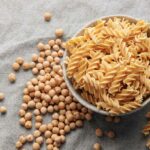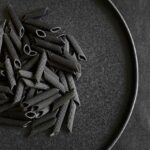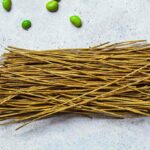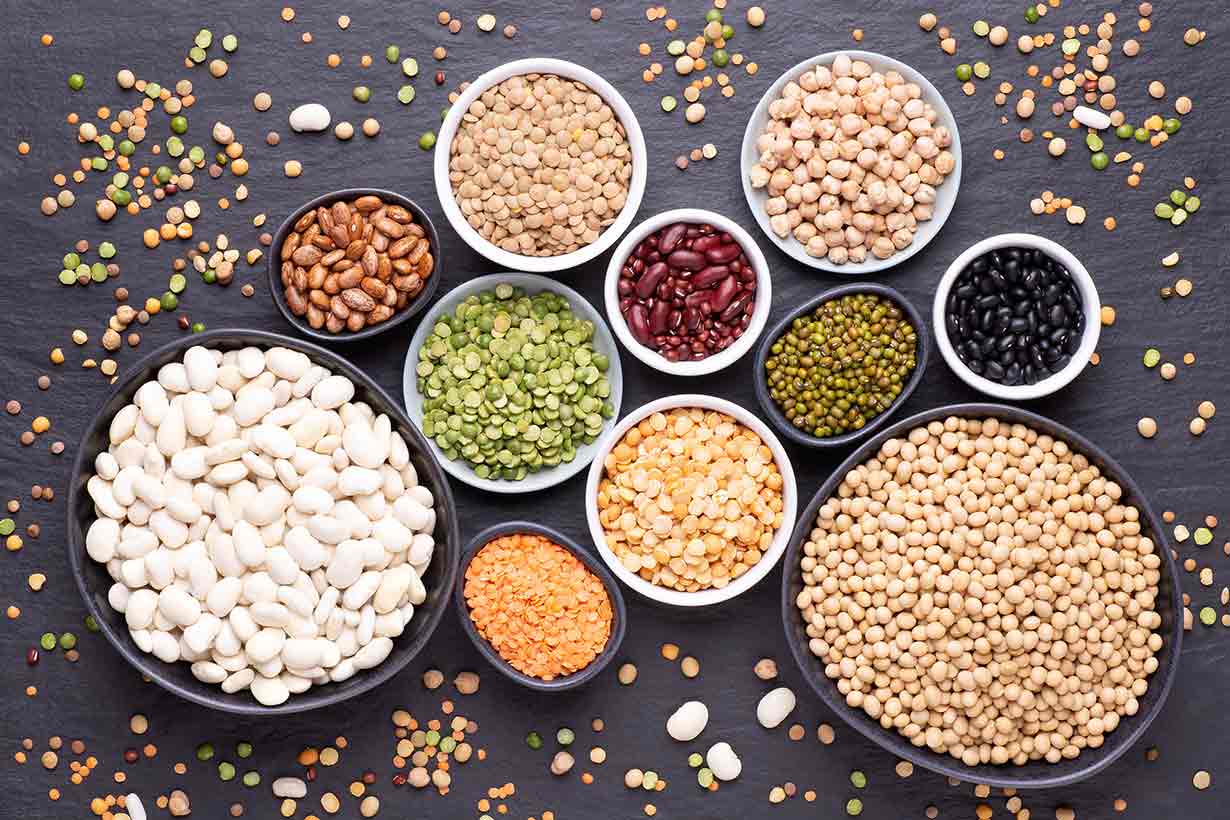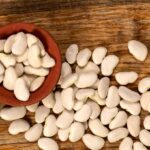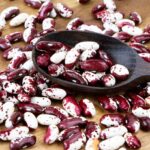Red lentil pasta is one of the most popular legume-based pasta products.
However, is it a healthy choice?
This article examines the nutritional properties of red lentil pasta and how it compares to traditional wheat pasta.
What Is Red Lentil Pasta?
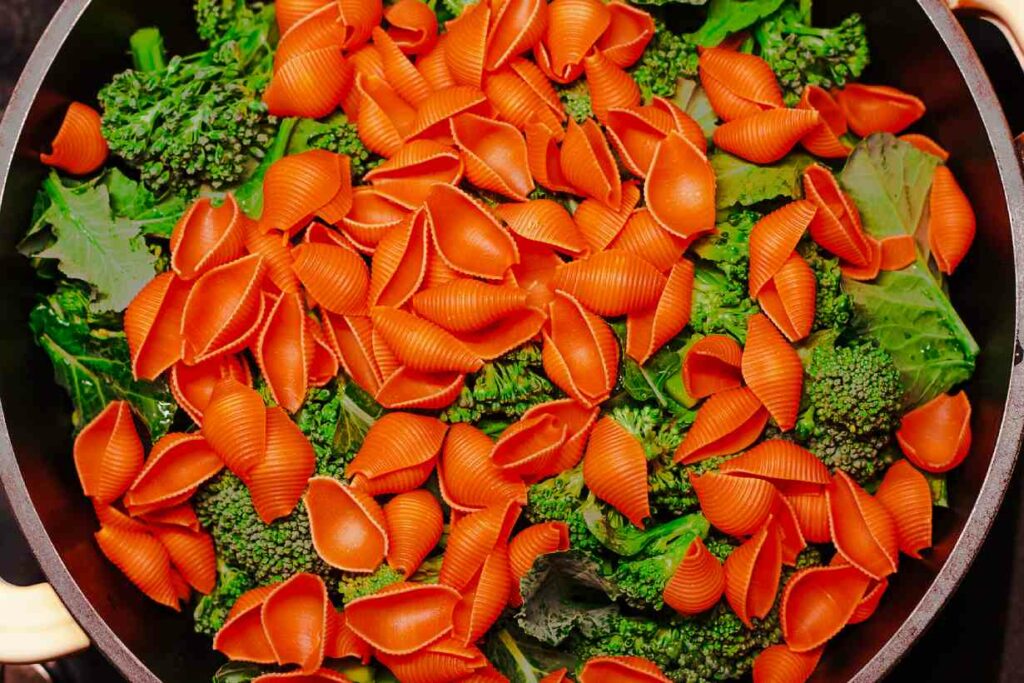
Red lentil pasta is a pasta product resembling traditional wheat pasta; it comes in the same shapes and varieties, and we can use it in the same way.
However, unlike traditional pasta, the primary ingredient is red lentil flour rather than semolina (durum wheat) flour (1).
For this reason, there is an understandable taste difference between the two; one is grain-based, and the other is legume-based.
Compared to white pasta, the taste is much stronger, and red lentil pasta has a thicker, slightly grainy, and chewier texture. However, this isn’t necessarily a bad thing, and it is a similar difference to that between white pasta and wholewheat pasta.
Since it comes from 100% lentils, red lentil pasta has a similar flavor to lentils. Therefore, people who like lentils will enjoy red lentil pasta.
It is one of several legume-based pasta alternatives to hit the market in recent years, with other products including edamame pasta and chickpea pasta.
Ingredients
Red lentil pasta contains just one ingredient; red lentil flour.
Production Process
Red lentil pasta has a relatively straightforward production process.
First, red lentil flour and water are mixed, giving the mixture a 30% moisture content. After this, the flour goes through an extrusion process, similar to regular wheat pasta (2).
Extrusion refers to a manufacturing process where soft food is forced through a shaped hole to make a particular shape. Other foods that use an extrusion process include cereals, some snack products (e.g. corn puffs), and dried pet food (3, 4).
Nutrition Facts
Using data from the NCC Food and Nutrient Database, here are the complete nutritional values for lentil pasta per cup (140g) cooked serving.
Daily values (% DV) have been calculated using the FDA’s published daily values.
| Nutrient | Amount | % Daily Value |
|---|---|---|
| Calories | 169 kcal | |
| Carbohydrates | 28.55 g | 10.4% DV |
| Fiber | 5.35 g | 19.1% DV |
| Sugars | 2.70 g | |
| Fat | 0.48 g | 0.6% DV |
| Saturated | 0.07 g | 0.4% DV |
| Monounsaturated | 0.08 g | |
| Polyunsaturated | 0.22 g | |
| Omega-3 | 0.04 g | |
| Omega-6 | 0.0 g | |
| Protein | 14.03 g | 28.1% DV |
Vitamins
| Vitamin | Amount | % Daily Value |
|---|---|---|
| Choline | 47.8 mg | 8.7% DV |
| Folate | 216.6 mcg | 54.2% DV |
| Vitamin A, RAE | 0.97 mcg | 0.1% DV |
| Vitamin B1 (thiamin) | 0.24 mg | 20% DV |
| Vitamin B2 (riboflavin) | 0.13 mg | 10% DV |
| Vitamin B3 (niacin) | 1.32 mg | 8.3% DV |
| Vitamin B5 (pantothenic acid) | 0.92 mg | 18.4% DV |
| Vitamin B6 (pyridoxine) | 0.27 mg | 15.9% DV |
| Vitamin B12 (cobalamin) | 0 mcg | 0% DV |
| Vitamin C | 3.14 mg | 3.5% DV |
| Vitamin D | 0 mcg | 0% DV |
| Vitamin E | 0.17 mg | 1.1% DV |
| Vitamin K | 11.02 mcg | 9.2% DV |
As we can see here, lentil pasta provides a significant source of B vitamins and contains particularly high folate levels.
Minerals
| Vitamin | Amount | % Daily Value |
|---|---|---|
| Calcium | 25.34 mg | 1.9% DV |
| Copper | 0.42 mg | 46.7% DV |
| Iron | 2.39 mg | 13.3% DV |
| Magnesium | 53.45 mg | 12.7% DV |
| Manganese | 0.71 mg | 30.9% DV |
| Phosphorus | 227.15 mg | 18.2% DV |
| Potassium | 458.99 mg | 9.8% DV |
| Selenium | 4.10 mcg | 7.5% DV |
| Sodium | 5.07 mg | 0.2% DV |
| Zinc | 1.81 mg | 16.5% DV |
Red lentil pasta contains high concentrations of several minerals, particularly copper, manganese, phosphorus, zinc, iron, and magnesium.
How Does Red Lentil Pasta Compare With Regular Wheat Pasta?
If we analyze the nutritional benefits of red lentil pasta, one of the most important things to ascertain is how it compares to traditional wheat pasta.
The following table shows how red lentil pasta compares nutritionally to white pasta and whole grain pasta per cup serving (cooked) (5, 6).
| Nutrient | Red Lentil Pasta | White Pasta | Whole Grain Pasta |
|---|---|---|---|
| Calories | 169 kcal | 220 kcal | 207 kcal |
| Carbohydrates | 28.55 g | 43.0 g | 41.9 g |
| Fiber | 5.35 g | 2.52 g | 5.46 g |
| Sugars | 2.70 g | 0.78 g | 1.05 g |
| Fat | 0.48 g | 1.29 g | 2.38 g |
| Protein | 14.03 g | 8.06 g | 8.33 g |
Calories
For the same cooked 140-gram cup serving, red lentil pasta contains 51 calories and 38 calories fewer than white pasta and whole grain pasta, respectively.
Carbohydrates and Fiber
Compared to white pasta and wholegrain pasta, red lentil pasta contains significantly fewer grams of carbohydrates. However, it still has a similar fiber content to wholegrain wheat pasta and more than double the fiber in white pasta.
Fat
All three pasta varieties are low in fat. However, red lentil pasta provides less than half the fat content of white paste and less than a quarter of the fat in whole grain pasta.
Protein
Red lentil pasta supplies more protein per cup serving than white and wholegrain pasta. It offers approximately 6 grams more protein per cup.
For another protein-rich legume-based pasta, see black bean pasta.
Vitamins and Minerals
Red lentil pasta offers a higher provision of vitamins and minerals compared to white pasta. However, the differences are less significant in comparison to wholegrain wheat pasta.
We can see below a comparison of the vitamin and mineral levels in red lentil pasta, enriched white pasta, and wholegrain wheat pasta. For clarity, bold highlights show the pasta with the highest amount of each nutrient (5, 6).
| Nutrient | Red Lentil Pasta | White Pasta | Whole Grain Pasta |
|---|---|---|---|
| Choline | 47.8 mg | 8.96 mg | 9.1 mg |
| Folate | 216.6 mcg | 102 mcg | 29.4 mcg |
| Vitamin A, RAE | 0.97 mcg | 0 mcg | 0 mcg |
| Vitamin B1 (thiamin) | 0.24 mg | 0.38 mg | 0.22 mg |
| Vitamin B2 (riboflavin) | 0.13 mg | 0.19 mg | 0.14 mg |
| Vitamin B3 (niacin) | 1.32 mg | 2.35 mg | 4.35 mg |
| Vitamin B5 (pantothenic acid) | 0.92 mg | – | – |
| Vitamin B6 (pyridoxine) | 0.27 mg | 0.07 mg | 0.13 mg |
| Vitamin B12 (cobalamin) | 0 mcg | 0 mcg | 0 mcg |
| Vitamin C | 3.14 mg | 0 mg | 0 mg |
| Vitamin D | 0 mcg | 0 mcg | 0 mcg |
| Vitamin E | 0.17 mg | 0.08 mg | 0.32 mg |
| Vitamin K | 11.02 mcg | 0 mcg | 0.84 mcg |
| Calcium | 25.34 mg | 9.8 mg | 18.2 mg |
| Copper | 0.42 mg | 0.14 mg | 0.31 mg |
| Iron | 2.39 mg | 1.78 mg | 2.39 mg |
| Magnesium | 53.45 mg | 25.2 mg | 75.6 mg |
| Manganese | 0.71 mg | – | – |
| Phosphorus | 227.15 mg | 81.2 mg | 176 mg |
| Potassium | 458.99 mg | 61.6 mg | 133 mg |
| Selenium | 4.10 mcg | 36.7 mcg | 50.5 mcg |
| Sodium | 5.07 mg | 325 mg | 329 mg |
| Zinc | 1.81 mg | 0.71 mg | 1.86 mg |
As we can see from the table, red lentil pasta offers the most choline, folate, vitamin A, vitamins B5 and B6, vitamin C, calcium, copper, iron, phosphorus, and potassium.
White pasta contains the most thiamin and riboflavin (fortification).
Lastly, wholegrain wheat pasta is the best source of vitamin B3, vitamin E, vitamin K, iron, magnesium, selenium, sodium, and zinc. However, it is worth noting that the sodium content is probably down to samples being cooked with salt.
Overall, we can see that red lentil pasta offers more protein, similar fiber, and more vitamins and minerals than wholegrain pasta for fewer calories. That said, wholegrain pasta is also a rich source of vitamins and minerals and contains higher levels of some.
Benefits of Red Lentil Pasta
Here is an overview of some other nutritional benefits of red lentil pasta.
Gluten-Free
Lentils and their flour (the sole ingredient in red lentil pasta) do not contain the gluten protein (7).
Thus, unlike traditional wheat pasta, red lentil pasta is suitable for people with celiac disease and other gluten sensitivities (8).
Lower Glyemic Index
A 2019 study demonstrated that red lentil pasta has a glycemic load of 22 (9):
The glycemic index (GI) is a score given to carbohydrate-containing foods that predicts the effect of that food on blood sugar when eaten alone (10, 11).
GI scores can range from 1 (low) to 100 (highest), and a score of 22 is classed as low GI.
By comparison, white pasta and wholegrain wheat pasta have significantly higher glycemic indexes of 55 and 52, respectively (12).
High Polyphenol Levels
Another benefit of red lentil pasta is that it contains relatively high polyphenol levels, which are bioactive compounds found in plants (13, 14).
A 2017 study presented research into the polyphenol content of different commercial dry pasta varieties. First, this research demonstrated that the total polypneols in cooked red lentil pasta is 629.1 mg per 100 grams (15).
Also, the table below shows the total polyphenol content of red lentil pasta compared to white pasta and wholegrain wheat pasta (15):
| Name | Red Lentil Pasta | White Pasta | Wholegrain Wheat Pasta |
|---|---|---|---|
| Total polyphenols (raw weight) | 631.6 mg | 415 mg | 538.2 mg |
| Total polyphenols (cooked weight) | 639.1 mg | 394.8 mg | 532.5 mg |
In this context, we can see that red lentil pasta provides a slight benefit over regular wheat pasta again. The main polyphenols in red lentils (and legumes in general) are flavonoids and benzoic and cinnamic acids.
How To Use Red Lentil Pasta
There are no special requirements for red lentil pasta, and we can use it the same way as any wheat pasta.
In other words, it is possible to use it for pasta dishes like spaghetti bolognese and lasagna.
We can also cook it with some vegetables, meat, tofu, or other foods of choice and mix them with a pasta sauce.
Common Questions
Here are some answers to other typical questions about red lentil pasta.
Firstly, there is nothing unique about red lentil pasta that suggests it can aid weight loss. However, it contains fewer calories than regular pasta and more protein and fiber. In this context, red lentil pasta could possibly satisfy appetite better than wheat pasta and potentially reduce subsequent food intake. Unfortunately, there is no research investigating this at present. However, research suggests that protein and fiber may enhance satiety and reduce appetite (16, 17, 18).
Red lentil pasta contains both carbs and protein. Despite being high in protein, its carbohydrate content is approximately double the amount of protein it provides.
Whether lentil pasta is suitable for a low-carb diet depends on the extent of the carbohydrate restriction and the number of carbohydrates the individual is trying to eat. That said, a cup of cooked red lentil pasta only contains 28 grams of carbohydrates, which should be able to fit into most moderate low-carb diets.
Studies show that red lentil pasta has an approximate cooking time of 5-7 minutes from dry. For those who enjoy slightly softer pasta, it may be better to boil for 1-2 minutes longer. As with all pasta, bring the water to a boil, add the pasta, and then simmer (15).
Final Thoughts
As this article shows, there are a lot of positive points about red lentil pasta.
It contains more protein and fiber than traditional pasta and has a higher overall vitamin, mineral, and polyphenol content.
Since red lentil pasta also has fewer calories than regular pasta, there appear to be many reasons to choose it for those who enjoy the taste.


